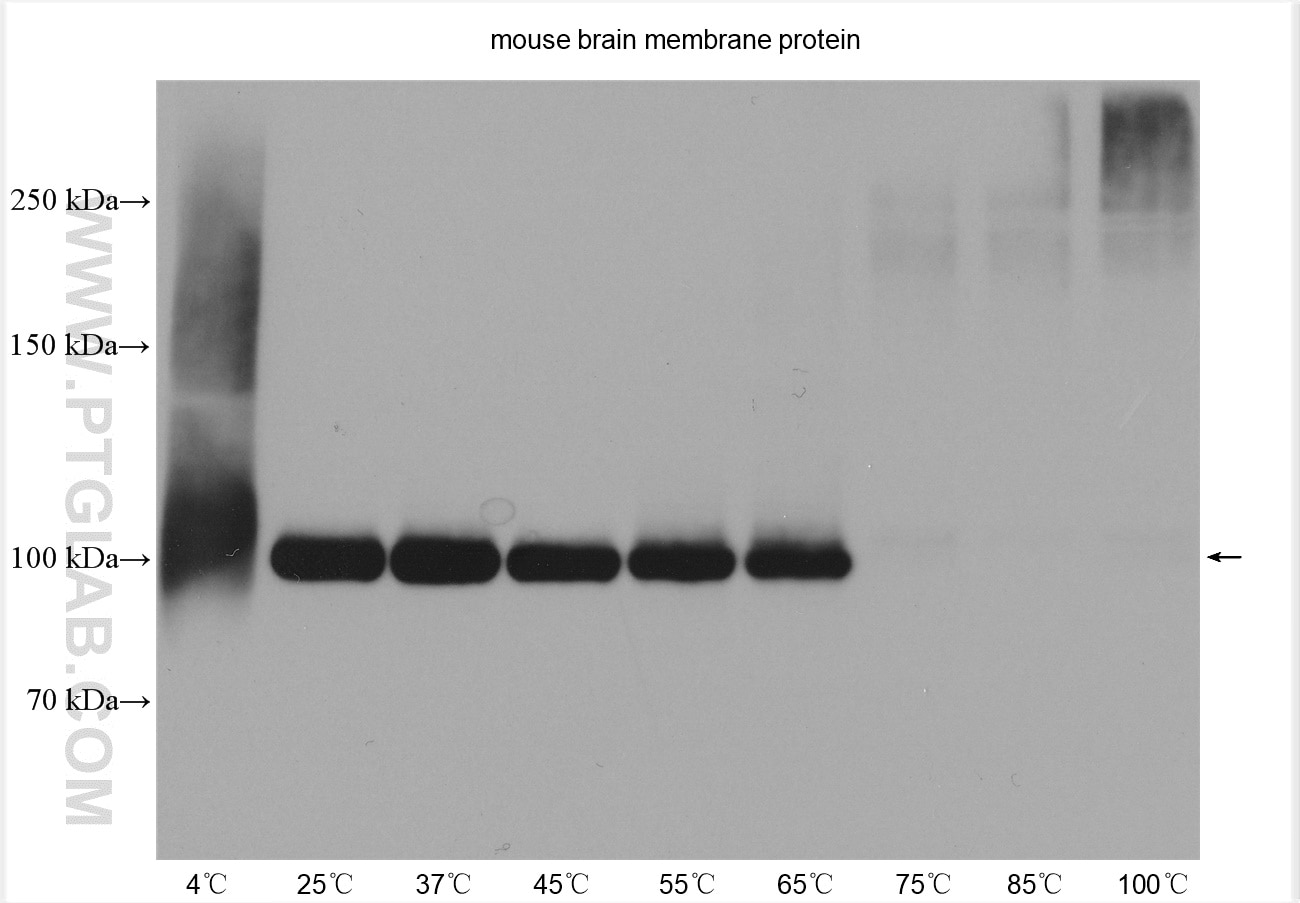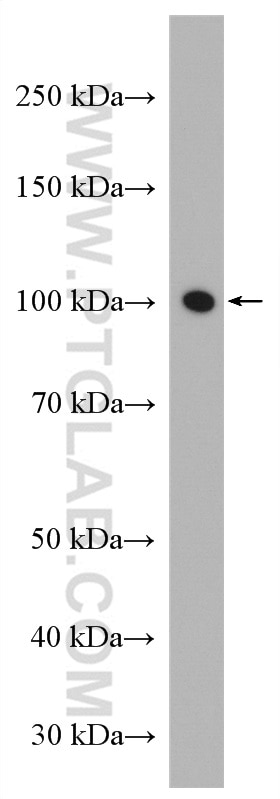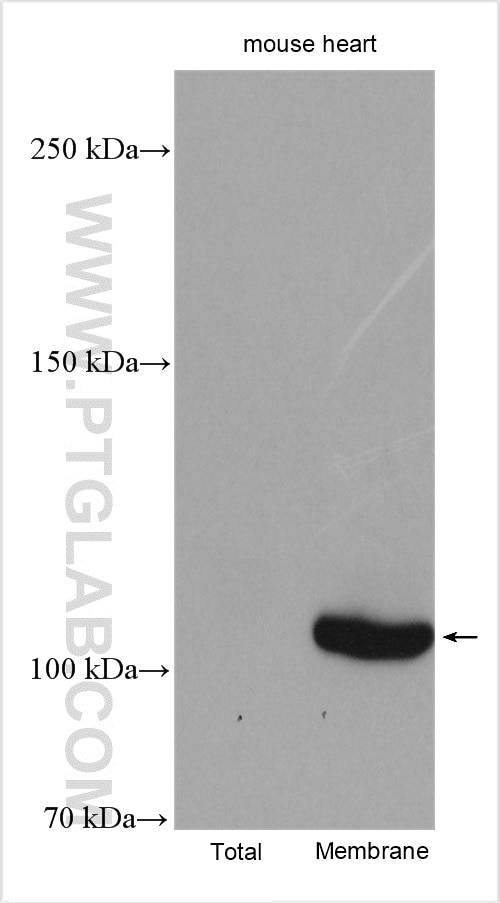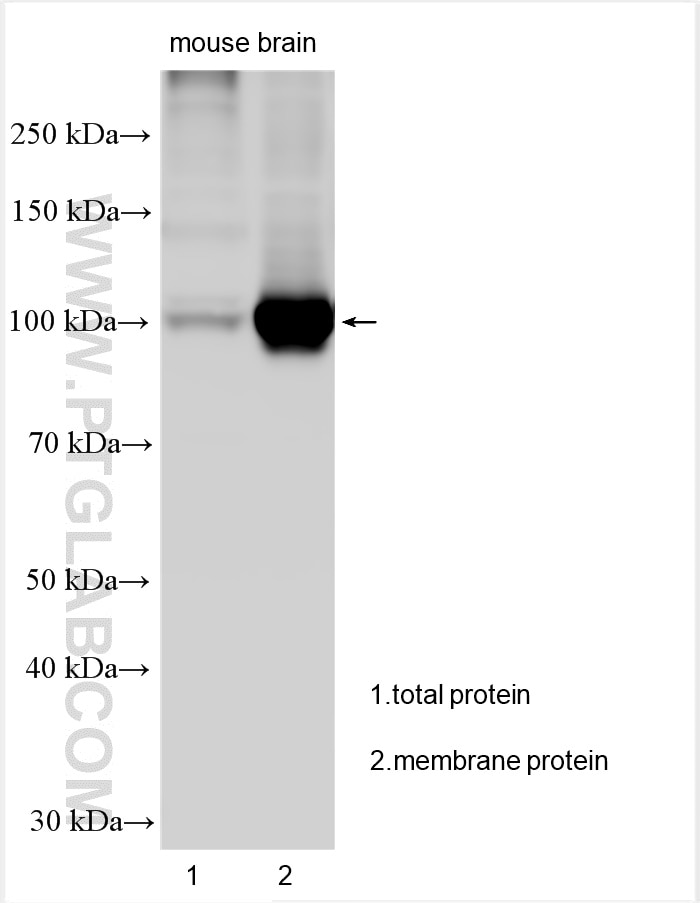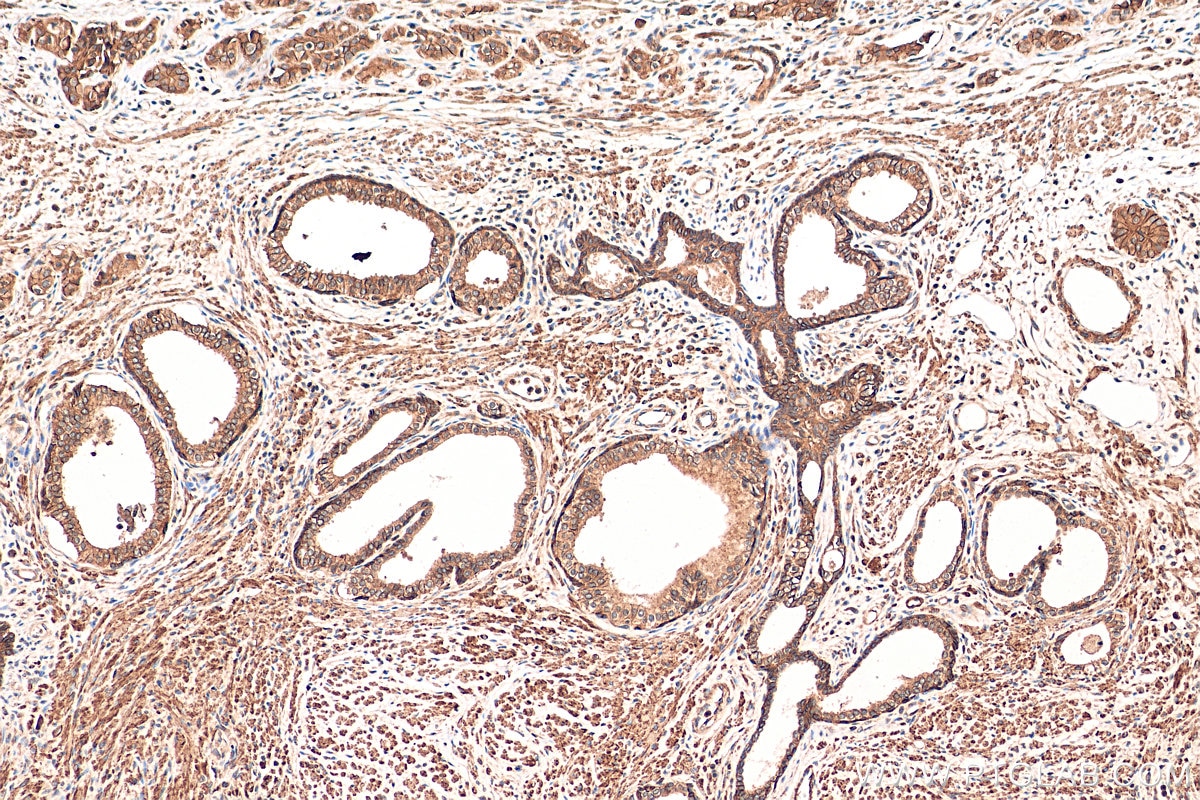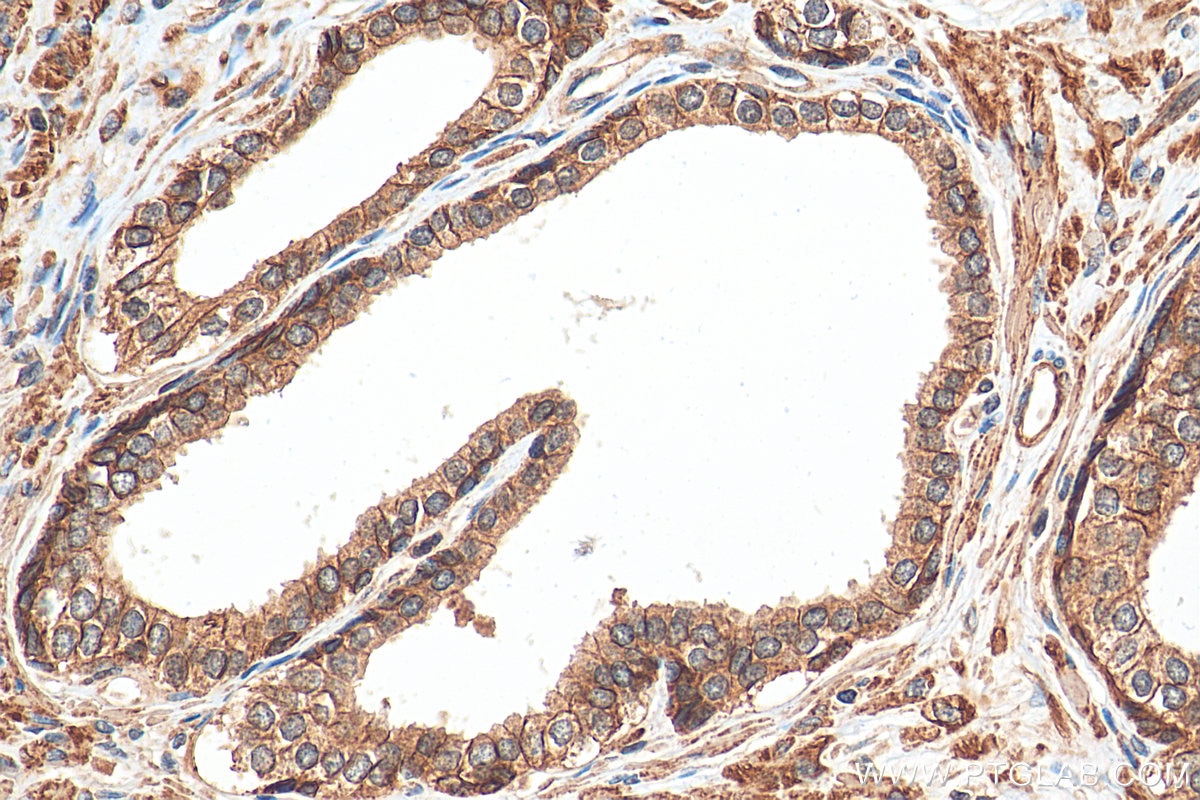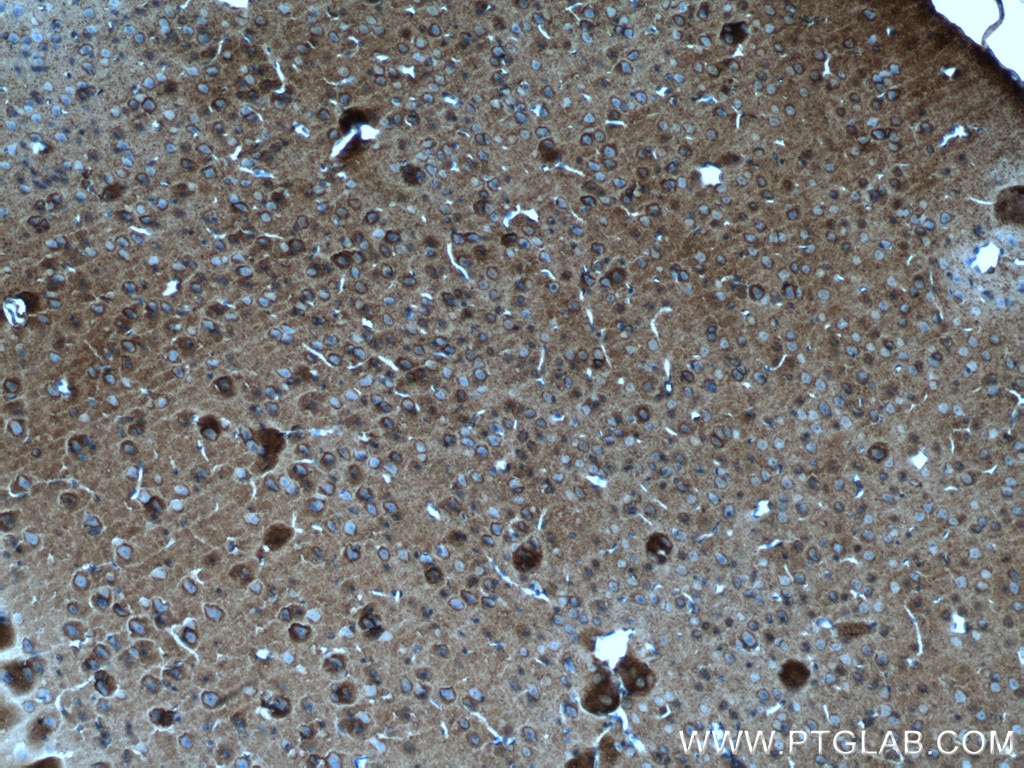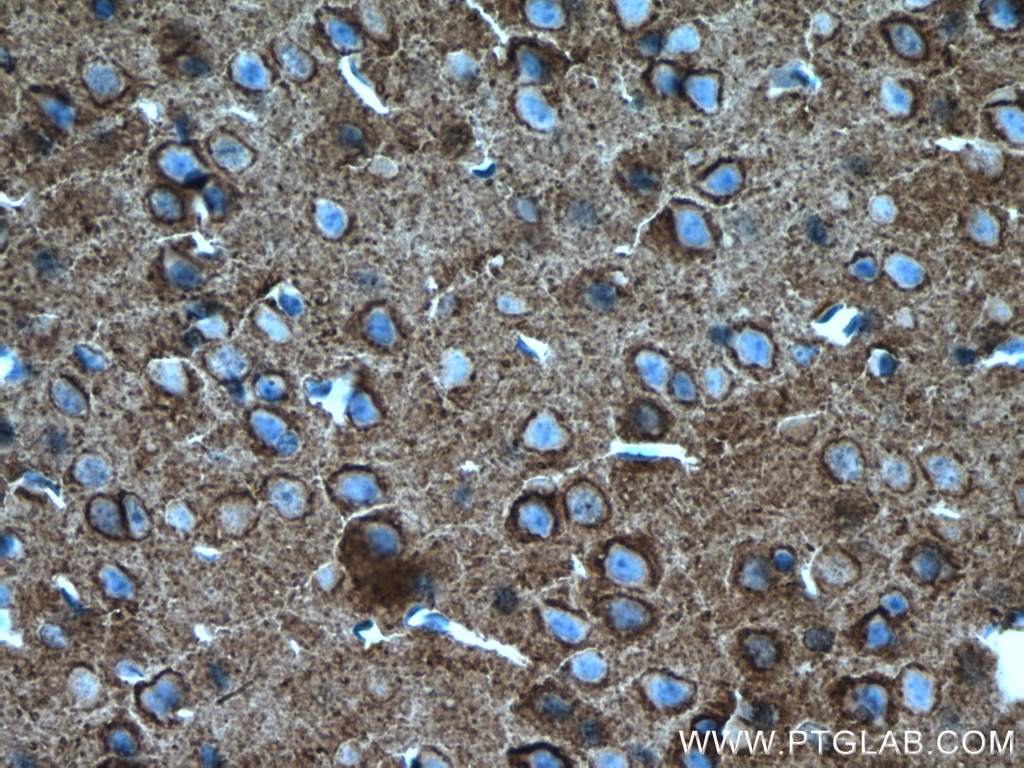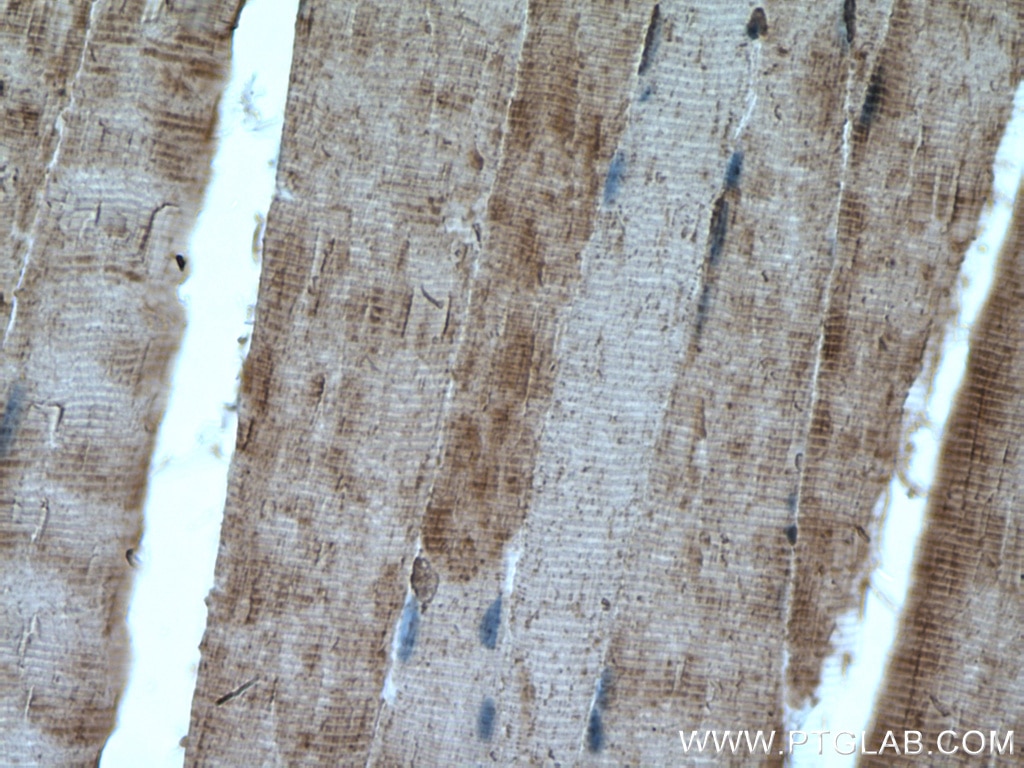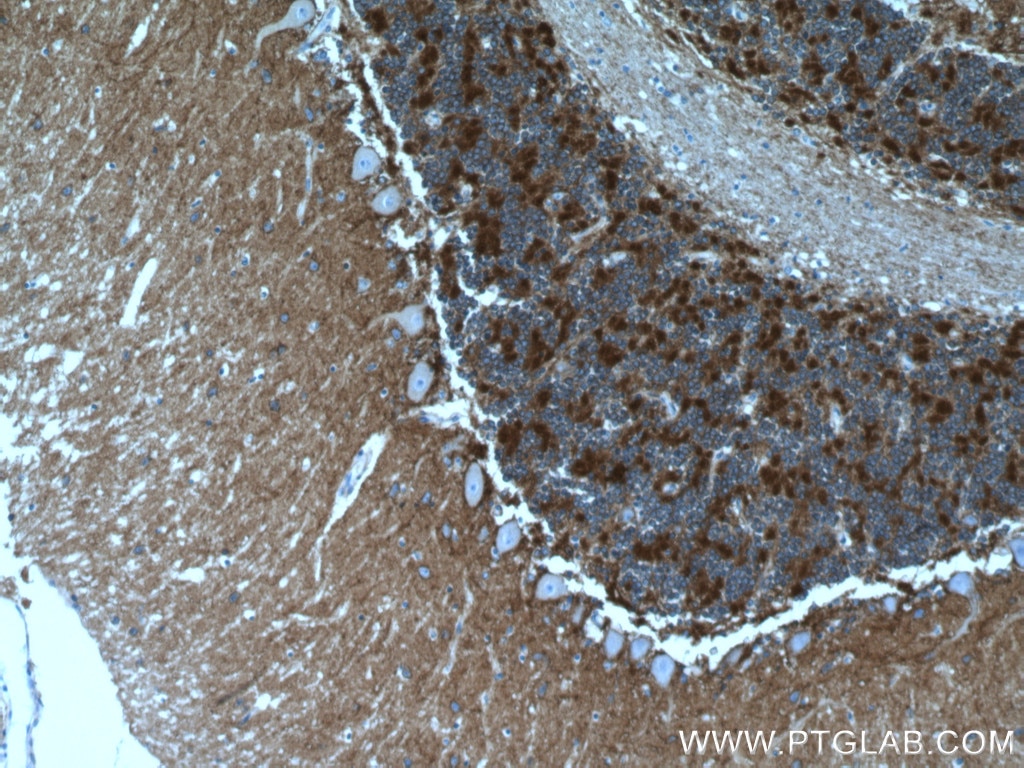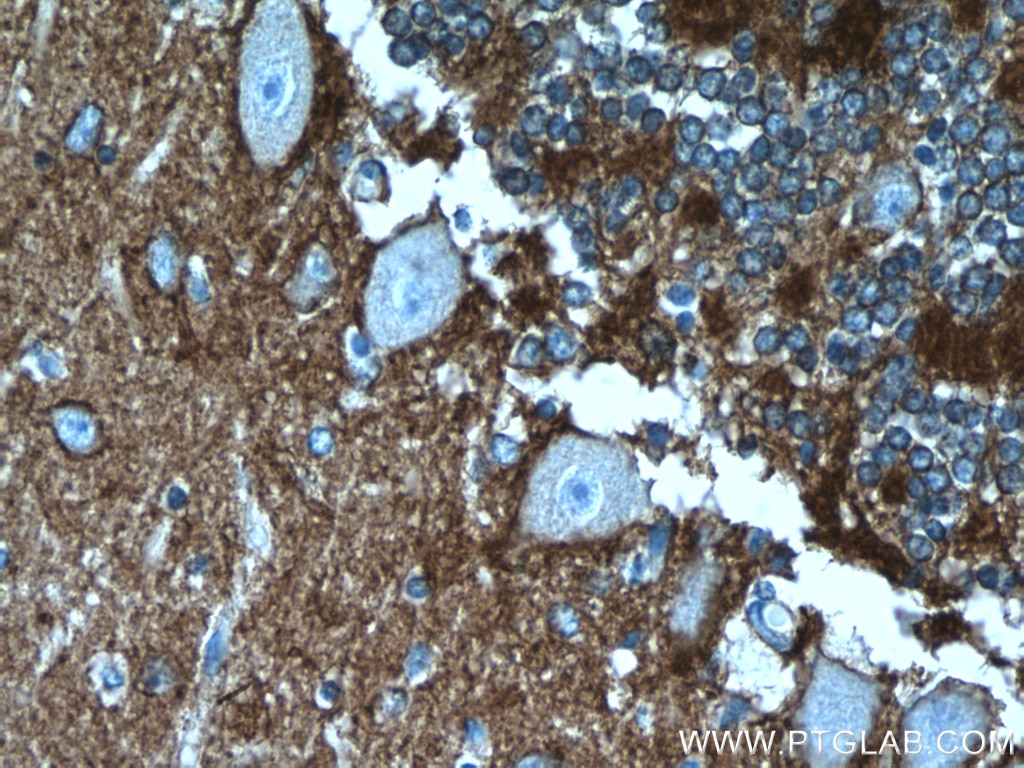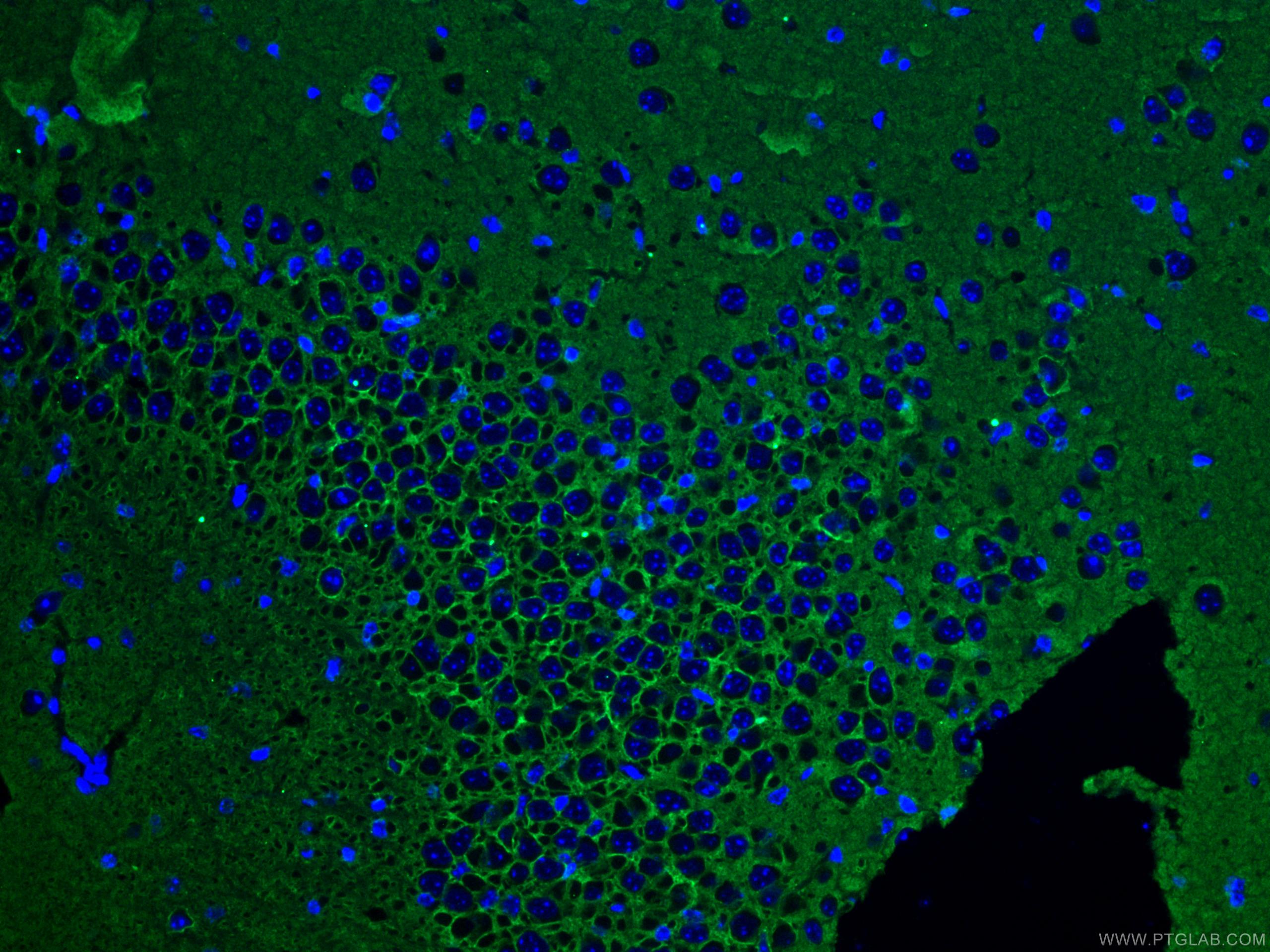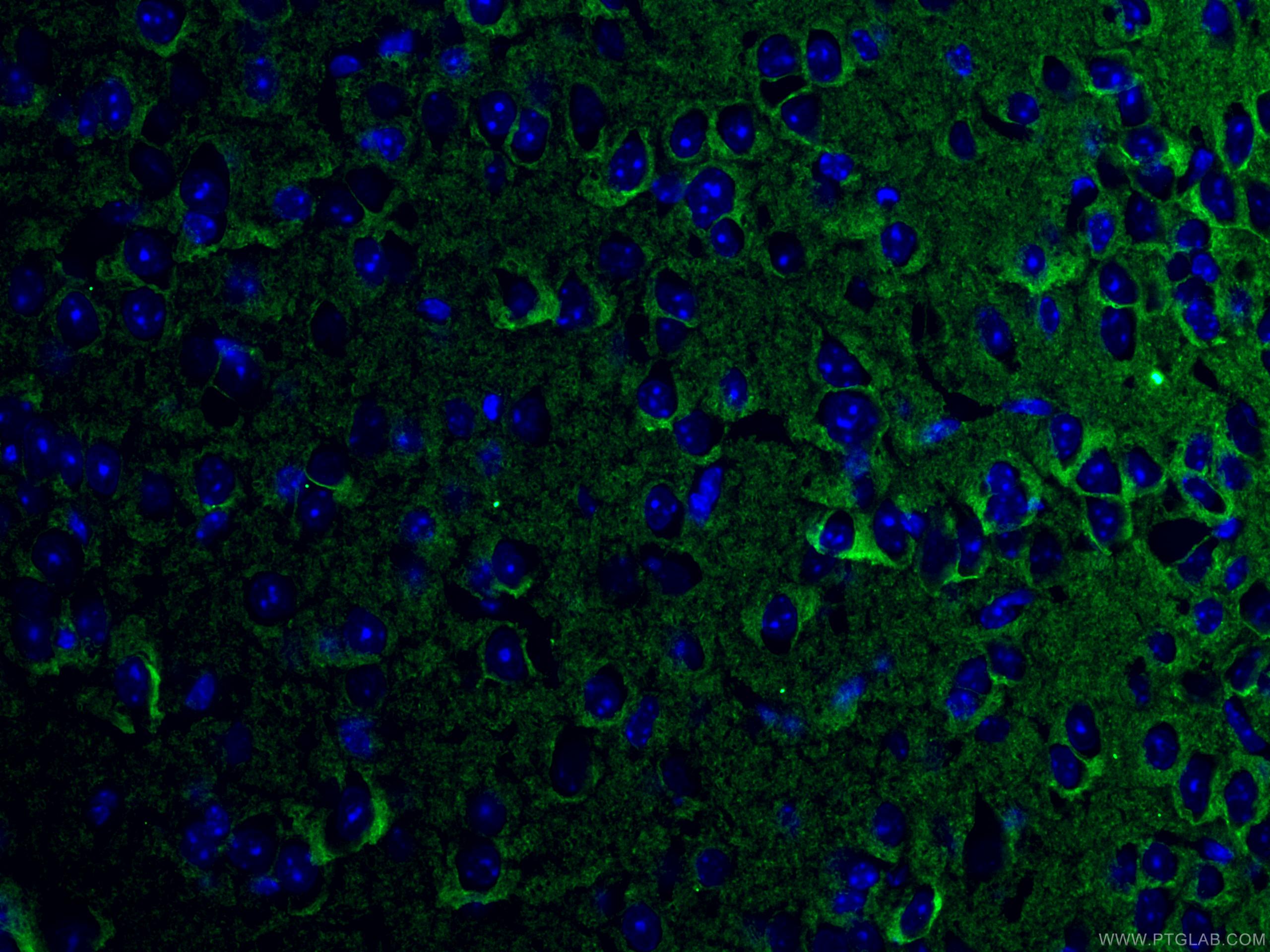Validation Data Gallery
Tested Applications
| Positive WB detected in | C2C12 cell, C2C12 cells, mouse brain tissue |
| Positive IHC detected in | human prostate cancer tissue, mouse brain tissue, mouse skeletal muscle tissue, human cerebellum tissue Note: suggested antigen retrieval with TE buffer pH 9.0; (*) Alternatively, antigen retrieval may be performed with citrate buffer pH 6.0 |
| Positive IF-P detected in | mouse brain tissue |
Recommended dilution
| Application | Dilution |
|---|---|
| Western Blot (WB) | WB : 1:500-1:3000 |
| Immunohistochemistry (IHC) | IHC : 1:50-1:500 |
| Immunofluorescence (IF)-P | IF-P : 1:50-1:500 |
| It is recommended that this reagent should be titrated in each testing system to obtain optimal results. | |
| Sample-dependent, Check data in validation data gallery. | |
Published Applications
| WB | See 5 publications below |
| IHC | See 2 publications below |
| IF | See 1 publications below |
Product Information
10868-1-AP targets ATP1A3 (C-terminal) in WB, IHC, IF-P, ELISA applications and shows reactivity with human, mouse, rat samples.
| Tested Reactivity | human, mouse, rat |
| Cited Reactivity | human, mouse |
| Host / Isotype | Rabbit / IgG |
| Class | Polyclonal |
| Type | Antibody |
| Immunogen |
CatNo: Ag1313 Product name: Recombinant human ATP1A3 protein Source: e coli.-derived, PGEX-4T Tag: GST Domain: 665-1013 aa of BC015566 Sequence: SEQIDEILQNHTEIVFARTSPQQKLIIVEGCQRQGAIVAVTGDGVNDSPALKKADIGVAMGIAGSDVSKQAADMILLDDNFASIVTGVEEGRLIFDNLKKSIAYTLTSNIPEITPFLLFIMANIPLPLGTITILCIDLGTDMVPAISLAYEAAESDIMKRQPRNPRTDKLVNERLISMAYGQIGMIQALGGFFSYFVILAENGFLPGNLVGIRLNWDDRTVNDLEDSYGQQWTYEQRKVVEFTCHTAFFVSIVVVQWADLIICKTRRNSVFQQGMKNKILIFGLFEETALAAFLSYCPGMDVALRMYPLKPSWWFCAFPYSFLIFVYDEIRKLILRRNPGGWVEKETYY 相同性解析による交差性が予測される生物種 |
| Full Name | ATPase, Na+/K+ transporting, alpha 3 polypeptide |
| Calculated molecular weight | 113 kDa |
| Observed molecular weight | 100-113 kDa |
| GenBank accession number | BC015566 |
| Gene Symbol | ATP1A3 |
| Gene ID (NCBI) | 478 |
| RRID | AB_2060962 |
| Conjugate | Unconjugated |
| Form | |
| Form | Liquid |
| Purification Method | Antigen affinity purification |
| UNIPROT ID | P13637 |
| Storage Buffer | PBS with 0.02% sodium azide and 50% glycerol{{ptg:BufferTemp}}7.3 |
| Storage Conditions | Store at -20°C. Stable for one year after shipment. Aliquoting is unnecessary for -20oC storage. |
Background Information
ATP1A3 participates in the catalyticing hydrolysis of ATP and the exchanging of sodium and potassium ions across plasma membrane. The catalyticing activity mode is ATP + H2O + Na+(In) + K+(Out) = ADP + phosphate + Na+(Out) + K+(In). It has been published that the neurologic disorders rapid-onset dystonia-parkionsonism (RDP), alternating hemiplegia of childhood (ACH) and CAPOS syndrome (cerebellar ataxia, areflexia, pes cavus, optic atrophy and sensorineural hearing loss) are all related with the mutation of ATP1A3. There are other reports suggest that early life epilepsy and episodic apnea revealing are potentially associated with the mutation of ATP1A3 as a result of impairment of Na+/K+ homeostasis. This antibody is generated against the C-terminal region (665-1013aa) of ATP1A3 and detects the band around 100-113 kDa in SDS-PAGE.(PMID: 30097153, 20301294, 29922587)
Protocols
| Product Specific Protocols | |
|---|---|
| IF protocol for ATP1A3 (C-terminal) antibody 10868-1-AP | Download protocol |
| IHC protocol for ATP1A3 (C-terminal) antibody 10868-1-AP | Download protocol |
| WB protocol for ATP1A3 (C-terminal) antibody 10868-1-AP | Download protocol |
| Standard Protocols | |
|---|---|
| Click here to view our Standard Protocols |
Publications
| Species | Application | Title |
|---|---|---|
Front Oncol Elevated Sodium Pump α3 Subunit Expression Promotes Colorectal Liver Metastasis via the p53-PTEN/IGFBP3-AKT-mTOR Axis. | ||
FASEB J Aggregation of the Constitutively Active K296E Rhodopsin Mutant Contributes to Retinal Degeneration | ||
Cancer Cell Int Comprehensive analysis of the expression of sodium/potassium-ATPase α subunits and prognosis of ovarian serous cystadenocarcinoma. | ||
Invest Ophthalmol Vis Sci Proliferator-Activated Receptor Alpha Inhibits Abnormal Extracellular Matrix Accumulation and Maintains Energy Metabolism in Late-Onset Fuchs Endothelial Corneal Dystrophy | ||
Acta Neuropathol Commun Bridging the gap: investigating the role of phosphorylation at the serine 129 site of α-synuclein in VAPB-PTPIP51 interactions | ||
Life Sci Identification of a robust scoring system based on metabolic genes followed by in-depth validation of ATP1A3 in glioma |

